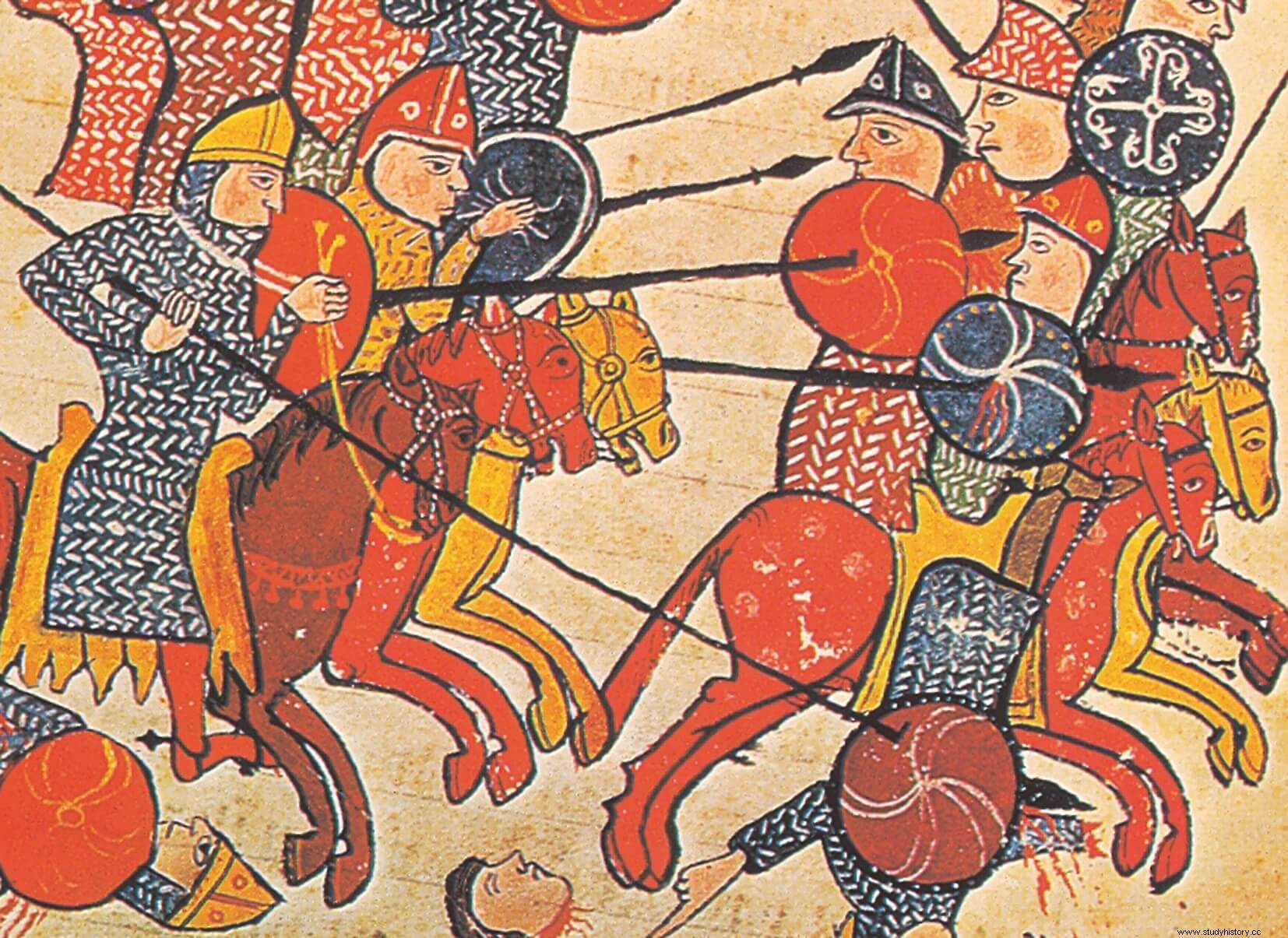
This situation had been reached after more than five decades in which most of the peninsular Christian kingdoms –Portugal, León, Castile and Aragón– had had to withstand the pressure of the Almohades . To a greater or lesser extent, all of them had suffered defeats and, in some cases, significant territorial losses. The Castilian experience had been particularly disastrous:in 1195 their armies had been destroyed in the Alarcos plains and the southern borders of the kingdom, south of the Tagus, had collapsed after two dramatic series of Muslim campaigns. Barely a year before the encounter at Las Navas de Tolosa, in 1211, the Calatrava fortress of Salvatierra had been conquered by a large Almohad army. The strategic and, above all, symbolic blow of that loss shocked not a few contemporaries:“Oh, how many cries of men, cries of women moaning all at once and beating their breasts for the loss of Salvatierra!” Bishop Juan exclaimed. of Osma; "The people cried for him and dropped their arms", confirms the Archbishop of Toledo. However, with the perspective of the years these same authors would end up interpreting that the damage suffered in Salvatierra had been providential, since, honoring its name, the loss of that castle spurred everyone to prepare a response that, in the end, , “saved the earth.”
This response came from the hand of Alfonso VIII and it materialized in the preparation of a great military expedition against the Almohads. In the last months of 1211, preparations began that not only mobilized Castilian troops, but also achieved the concurrence of troops from all the Iberian kingdoms and the preaching of a crusade that brought together a large ultra-Pyrenean contingent. With the spiritual support of Pope Innocent III, with the political and military support of Pedro II of Aragón and Sancho VII of Navarra , with the reinforcement of Portuguese and Leonese troops and counting on the push of thousands of crusaders arrived from France, the expedition finally met in Toledo, on the eighth of Pentecost of 1212 (May 20). A month later "the army of the Lord", as it was described by the archbishop of Toledo, set out and its progression towards the south, along the road that linked Toledo and Córdoba, was dazzling:in just twenty days they took the fortresses of Malagón, Calatrava, Alarcos, Piedrabuena, Benavente and Caracuel. Meanwhile, the Islamic army, led by the Muslim caliph al-Nasir, who had wintered in Seville after the previous Salvatierra campaign, headed towards Jaén to try to block the passage of the Crusaders in Sierra Morena.
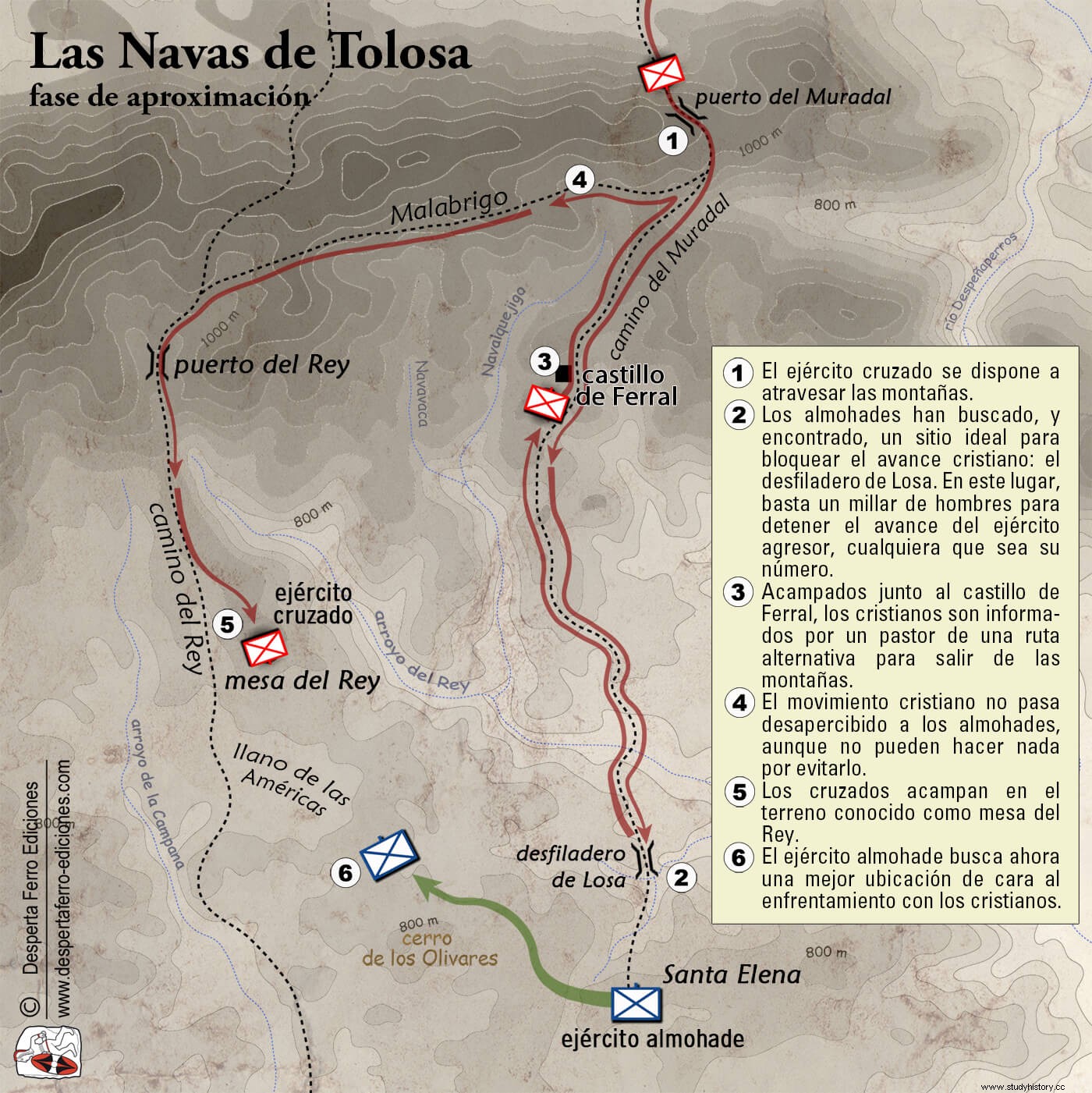
Some data suggest that from the outset the The campaign led by Alfonso VIII of Castile had a clear purpose:to defeat the Almohads in a pitched battle. On the contrary, the Islamic contingent tried at all times to avoid it, opting instead to hinder the march of the Crusaders to the south:their goal was none other than to cause the disorderly retreat of the Christians and attack them taking advantage of the ensuing chaos. If this really was the case, as it seems from the most reliable testimonies, they did not succeed:despite the difficulties, the Christians managed to cross the passes of Sierra Morena –the presence of a shepherd who knew the area was providential for this purpose– and place their camp at the King's Table , in front of the place occupied by his enemies, who in turn had moved north, from Jaén to a hill near the current town of Santa Elena –the Cerro de los Olivares–. From Friday, July 13, both armies were facing each other and skirmishes took place around the Christian camp. However, the Crusader leaders avoided provocations and delayed the pitched clash until they were sure of the disposition, number and intentions of their enemies. Only then, on Monday, July 16, both contenders deployed their forces on the field.
Two military traditions face to face
Two different weapons traditions and tactics, honed in decades of clashes in Europe, North Africa and the Middle East, were about to collide. On the one hand, the crusading army He was indebted to military practices that had been developing in the West since the 11th century, in which heavy cavalry occupied a central position. Equipped with a strong mount, to which they remained strongly attached thanks to the use of long stirrups and high saddles in which they were "encased", protected by metal chainmail, shield and helmet, armed with a sword and, above all, everything, from a long lance with which they attacked the enemies in the course of the charge, their protagonism in the European battlefields during the central centuries of the Middle Ages was unquestionable, even though they were frequently accompanied by pawns, both lancers as archers and crossbowmen, whose role was also important.
The most characteristic tactical movement of the heavy cavalry was the charge against a stationary enemy or against another troop of knights:to carry out this action, the mailed horsemen were placed very close to each other. from others, creating a lined front several rows deep. The secret of the heavy cavalry charge lay not only in maintaining the cohesion of the group until the clash with the enemy occurred, but also in the successive entry into combat of the different ranks, since this multiplied the collision effectiveness. In addition, the placement of two wings, to the right and left of the central body of knights, allowed flanking movements to be carried out when necessary, while a vanguard body began the fighting and a rearguard ensured the final blow. 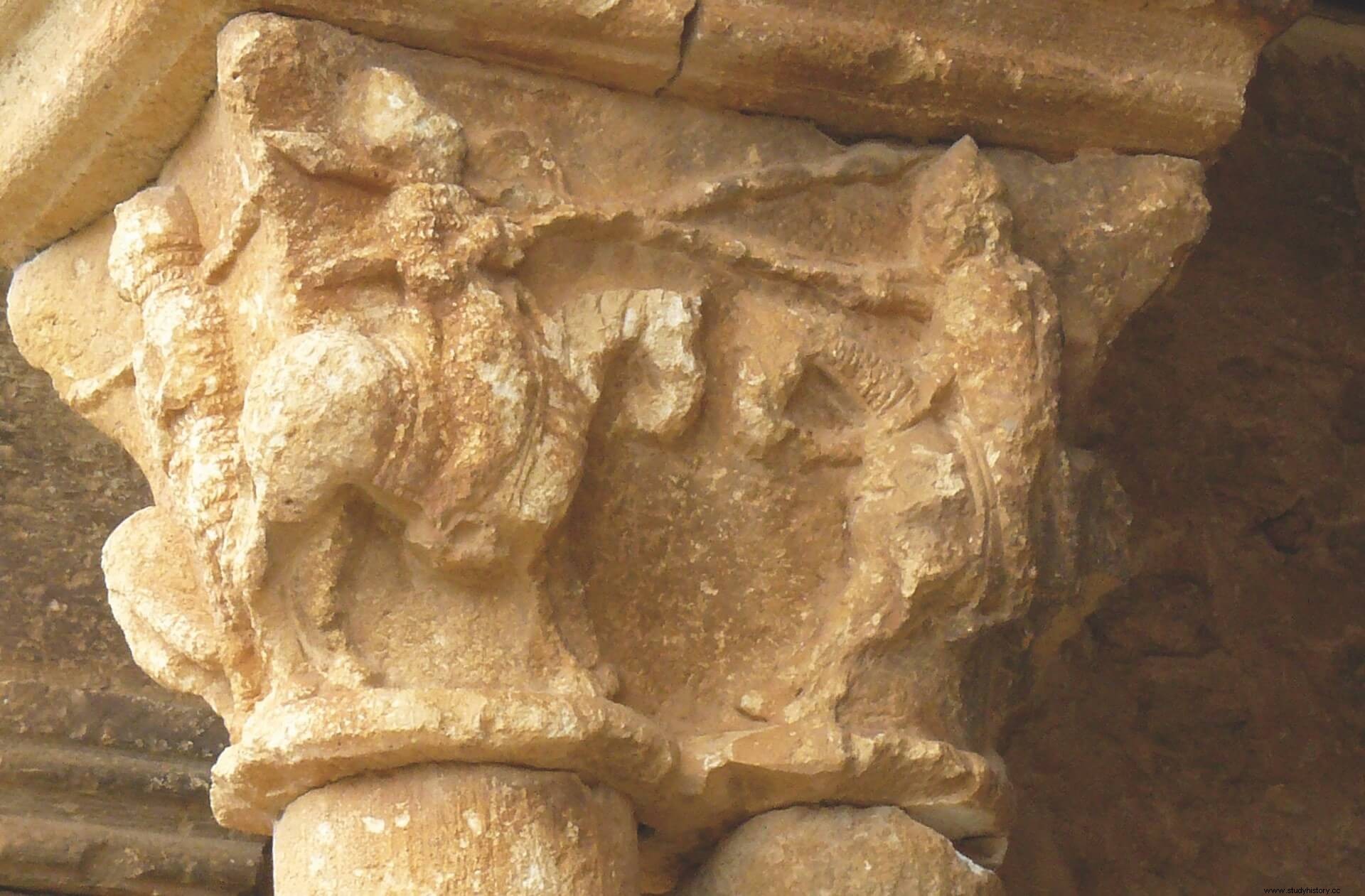
On the other hand, the army Muslim he used to combine the solidity of close pawn formations with the mobility of light cavalry and the forcefulness of the heavy cavalry charge. The combination of these three elements is precisely one of the characteristics of the armies recruited by the great North African empires that had a strong presence in al-Andalus, including the Almohads. Traditionally, the Arabs and Berbers had used cavalry equipped with very light equipment that allowed them to carry out attack and retreat tactics or the shooting of arrows by mounted archers to punish and disorganize the enemy ranks. To ensure the protection of this cavalry if necessary or to offer them a resting place between charges, they used to leave a closed formation of pawns behind, sometimes reinforced with obstacles –baggage, animals…–. Over time, and perhaps influenced by their western neighbors, they also began to use heavy cavalry forces that used the frontal charge.
In order to make these joint forces operational –and just as the Christian armies did– it was normal that, depending on the number of troops, the Muslim contingent was arranged in several bodies in which light cavalry, heavy cavalry and pawns were combined:a vanguard, a central body, two wings and a rear guard, placing behind them a reinforced camp with some kind of palisade and with pawns well fixed to the ground, where they were located the sovereigns together with their personal guard or the most faithful troops. In the Hispanic experience, the success of the Almoravid and Almohad armies had usually been based on their ability to confuse the Christians with the shooting of arrows and with the tactics of attack and retreat –tornafuy –, and in their ability to outflank them through their wings, allowing them to wrap around them or lunge at them from behind.
The Battle of Las Navas de Tolosa
The tactical devices that both contenders organized on the battlefield of Las Navas de Tolosa seem to be consistent, in general terms and to the extent that reconstruction is possible according to the closest and most reliable testimonies , to the models we have just outlined. On the Crusader side, the troops, both heavy knights and pawns, stood at the foot of their camp at the King's Table and were organized into three large bodies:a central one, commanded by Alfonso VIII, and two lateral ones, one to the left. left led by King Pedro II of Aragon, and another on the right led by Sancho VII of Navarre. Each of these corps, in turn, was divided into three large lines placed deep, forming a vanguard, a center and a rearguard. The monarchs were placed in their respective rearguards.
In front of them, the Muslims placed in their rear and on an elevated position on the ground –in the Cerro de los Olivares–, a strong device protected by a compact body of infantry – among them were the black slaves of the personal guard of the Almohad caliph who, according to some witness, had their legs tied to prevent them from fleeing–, reinforced by a barrier of obstacles –“a redoubt similar to a palenque”, in the words of Jiménez de Rada–. Here the Muslim leader was established, who in this way could have a global vision of what was happening in the field. In front of this device a central body formed by the Almohad and Andalusian cavalry was organized, perhaps reinforced by a vanguard and a rearguard. In an external position –on the sides of the previous device, that is, forming two wings, or in front of it, the sources differ in this detail–, the Arab light cavalry specialized in shooting arrows from the mounts and in the techniques of the tornafuy .
The tactical deployment unfolded as might be expected based on the type of weaponry and the tactical traditions of each side:the vanguards of the three corps of the Crusader army, fighting pending Above, they charged against the vanguard and the Almohad central body, which absorbed this first shock; then the central corps of the Christians began to move, whose arrival in the combat zone reactivated the struggle, although their thrust also ended up being dampened by the central Islamic corps; Finally, a part of the Christian rearguard joined the fighting, definitively breaking the resistance of the Muslim central body, while the rest of the Crusaders' rear successfully launched an assault on the fortified Almohad camp, from where the caliph had than to flee precipitously.
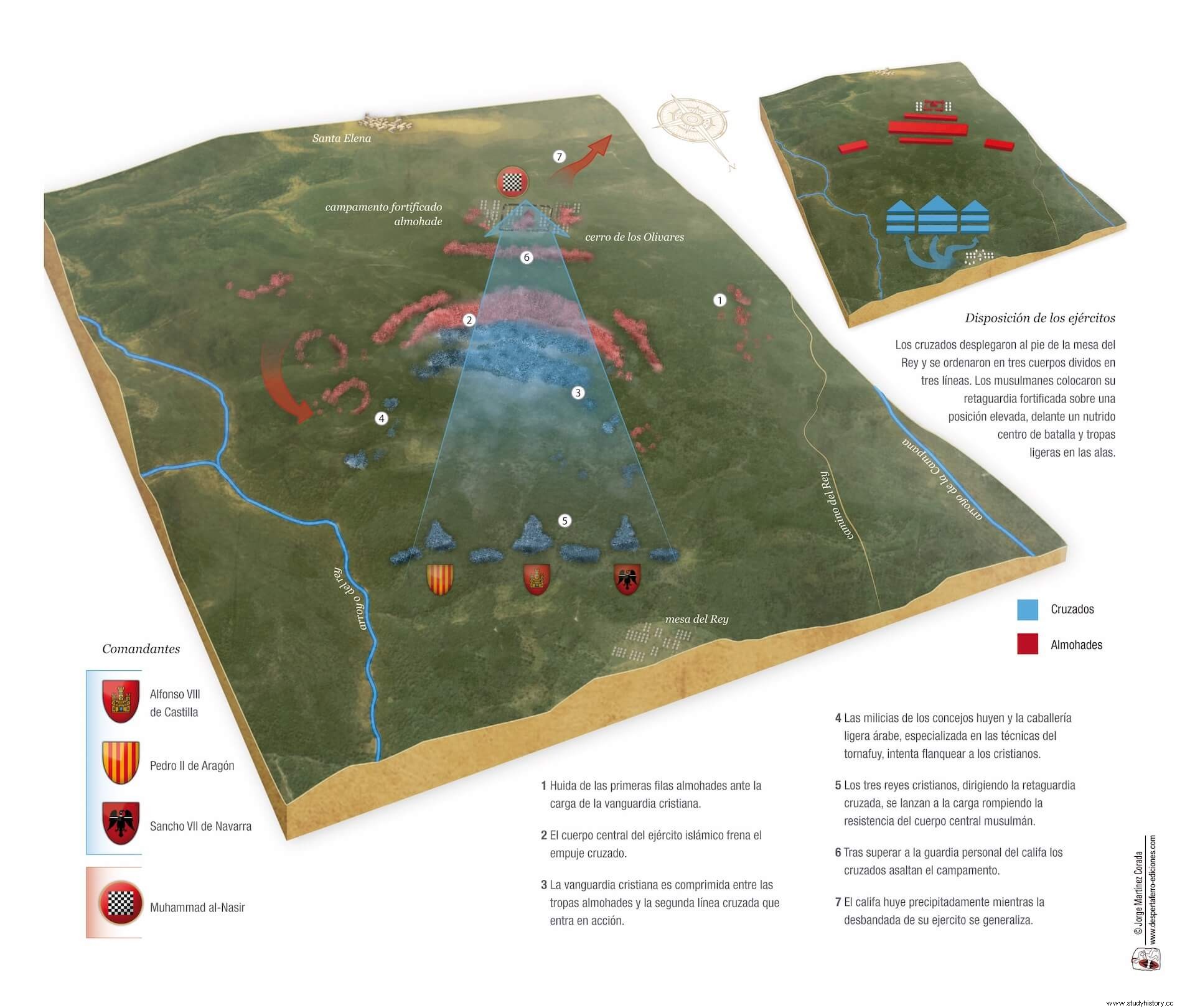
Regarding the movements of the caliphal army , it is probable that the Arab light cavalry, located outside their device, undertook the flight following their traditional tactics, but it does not seem that they managed to attract the Christians to a mad pursuit. The Islamic vanguard, formed by the volunteers of the holy war, a group undoubtedly highly motivated but poorly prepared for combat, was devastated by the Crusader vanguard. According to what the witnesses indicated, the central body of the Islamic army, without a doubt the largest, limited itself to facing the various charges of the Crusaders who finally, as we have indicated, managed to break their formation, reach the device fortification of the Islamic rearguard and storm it.
The key to Christian victory It seems to reside, therefore, both in its ability to maintain its cohesion without falling into the provocations of the Arab mounted archers, and in the proper execution of the charges of the heavy cavalry, which managed to enter the fray at the pace required by the circumstances of the combat. , without precipitation and without dilation. The most reliable accounts of the battle, provided by direct witnesses, do not offer further clarification on the behavior of the Muslim contingents:we do not know to what extent the indiscipline or discontent –if it really existed– of some Andalusian and Almohad sectors with the caliph, he was able to influence the course of the battle, as some late Muslim chroniclers maintain. But there are at least a couple of circumstances that can be pointed out as possible causes of their defeat:firstly, it seems evident that the feigned retreat technique did not work and that the action of the mounted archers did not do much damage to their Christian opponents; Secondly, and perhaps more importantly, the wings of the Muslim army failed, if at all, to outflank and encircle the Christian troops, as had been the case in previous battles.
Any explanation given to this last circumstance will be merely speculative, but at least one hypothesis can be established:as we have pointed out, the Almohad leaders did not seek battle , but on the contrary they tried to avoid it by blocking the passage of the Crusaders through Sierra Morena. In fact, they were about to achieve their objective when the Christians were unable to cross the Losa Gorge and had to fall back. For the caliph it was an absolute and unpleasant surprise to see that his enemies had found a path –the one shown to them by the famous shepherd from Las Navas de Tolosa–, had approached the Almohad positions and found themselves face to face, located just four or five kilometers and without any obstacle that would prevent the meeting.
This means that the Muslim army was forced to face the battle on a terrain that it had not chosen and that was possibly not favorable for its usual way of fighting:it is true that they had the advantage of being at height, but both the feigned flight technique and the overflow through the wings required a flat and wide space, and those were not precisely the characteristics of the Las Navas de Tolosa field. On the contrary, it was relatively narrow –between two and three kilometers wide– and was delimited on both sides by steep slopes and ravines –those formed by the Rey and Campana streams–. In addition, as we have seen, the crusading army was numerous enough to deploy two lateral corps, those commanded by the kings of Aragon and Navarre, which allowed it to cover a good part of the field and prevent its flanking.
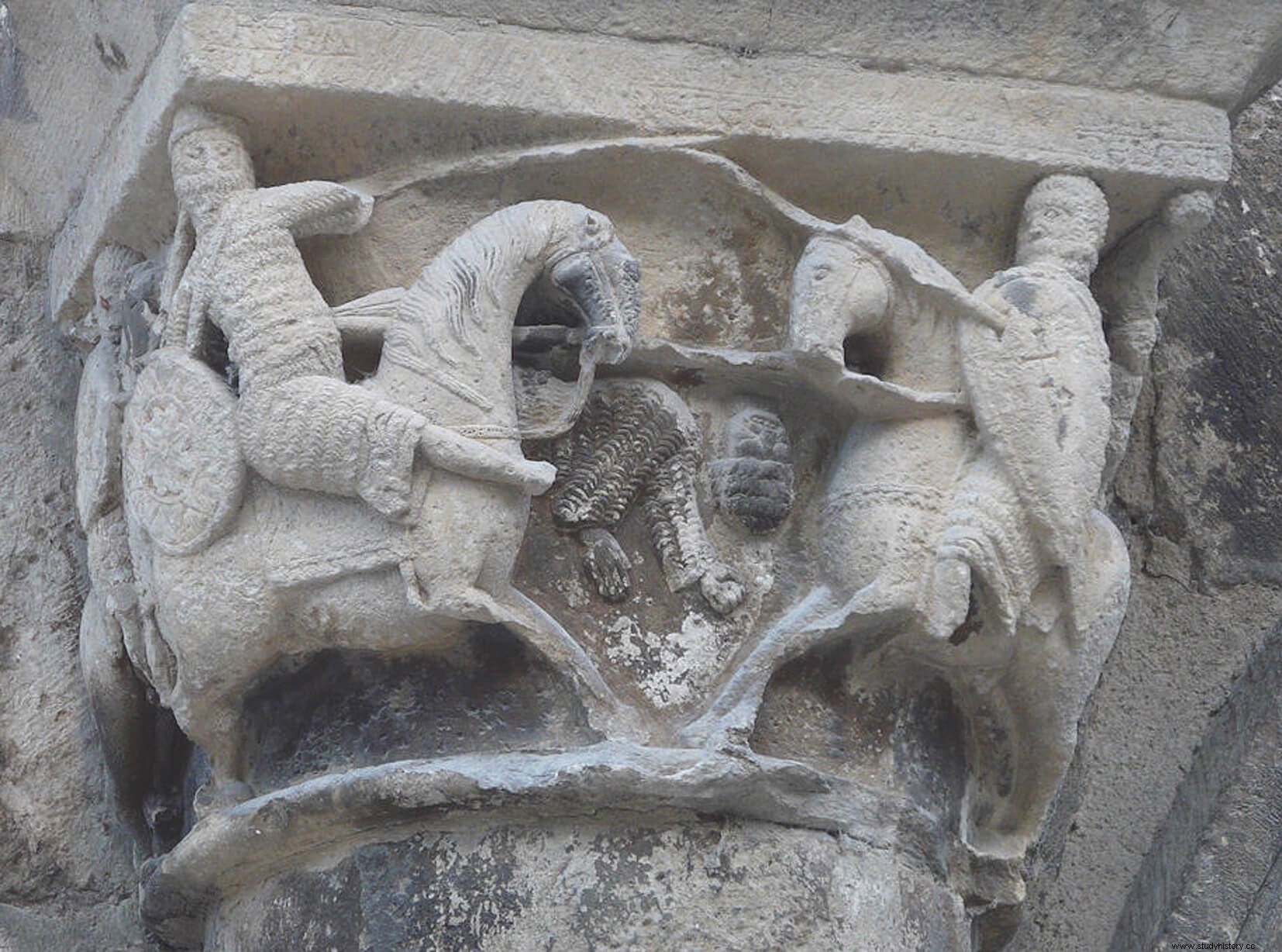
Whether for this or other reasons, I What seems clear is that the Muslim army did not manage to complete or take advantage of the movements that they used to deploy on the battlefield and that had brought them so much success on previous occasions. In contrast, the Christian contingents practiced their tactical traditions much more effectively, leading to a resounding victory.
The consequences
The campaign did not end immediately, but instead the crusading army wanted to exploit its success by advancing south, conquering several fortresses in Sierra Morena –Vilches, Ferral, Baños and Tolosa–, destroying Baeza and looting Úbeda after submitting it to a siege. However, by then, little more than a month after the start of the campaign, the momentum of the expedition had run out and the scourge of various diseases made it advisable to call it a day and return to Toledo. In the words of Bishop Juan de Osma, "they returned to their own places with victory, honor and much loot."
The Christian victory at Las Navas de Tolosa was etched in the memory of contemporaries and that of subsequent generations as a fundamental milestone in the history of military relations between Christians and Muslims. Some interpreted then, and centuries later many more have continued to consider it so, that the battle was the coup de grâce that ended the Almohad Empire or even, going a little further, that caused the definitive ruin of al-Andalus. This does not seem to be the case:the Almohad power did not collapse as a direct consequence of their defeat at Las Navas de Tolosa, but as a result of the emergence of their own contradictions, something that would not happen until a decade later. After analyzing the factors that intervened in its final crisis, it does not seem risky to affirm that its collapse would have occurred with or without battle. With regard to al-Andalus, it is well known that, after the battle, the peninsular Islamic powers would still survive for almost 300 years, so that it is also somewhat exaggerated or perhaps simplifying to look for the end of its history in that battle.
Of course, the victory at Las Navas de Tolosa did not end the Reconquest, but it must be recognized that, from a military point of view, it had far-reaching consequences that we did not can be denied:since the second half of the eleventh century, at least since the operations aimed at the conquest of Toledo began, until July 1212, Christians and Muslims had maintained a bitter and violent territorial dispute for control of the lands located between the Tajo and Sierra Morena, particularly focused on the domain of the fortresses that marked out that vast territory. For decades the outcome of those clashes was uncertain and advances and setbacks followed one another to the rhythm of the interventions of the Almoravids and Almohads or the war efforts of the kings of Castile and León, Alfonso VI, Alfonso VII and Alfonso VIII. The resounding success achieved by the latter in Las Navas de Tolosa put an end to said dispute in the course of an expedition that lasted little more than thirty days, ratified, however, by a resounding victory on the battlefield:as a consequence of all For this reason, that vast territory passed definitively into Christian hands. Furthermore, although the Crusaders were unable to obtain any important town in the Guadalquivir valley –Baeza and Úbeda were destroyed, but not retained–, the control of some fortresses and passes in the Sierra Morena remained in Castilian hands, which left the way clear. to the south. The battle had served to close an era, the one that had begun in front of the walls of Toledo almost a century and a half ago, but it also established the strategic conditions for the beginning of a new historical phase:that of the great conquests of the 13th century.
Bibliography
- Alvira Cabrera, M. (2000):War and ideology in Medieval Spain:culture and historical attitudes towards the turn of the early thirteenth century. Battles of Las Navas de Tolosa (1212) and Muret (1213) , Doctoral Thesis, Complutense University of Madrid, Madrid.
- García Fitz, F. (2005):Las Navas de Tolosa , Barcelona.
- Huici Miranda, A. (2000):The great battles of the Reconquest during the African invasions (Almoravids, Almohads and Benimerines) , Madrid, 1956. [Ed. Facsimile with preliminary study by E. Molina López and C. Navarro Oltra, Granada].
- López Payer, M. G. and Rosado Llamas, Mª D. (2002):The Battle of Las Navas de Tolosa , Madrid.
- Vara Thorbeck, C. (1999):The Monday of Las Navas , Jaen.
